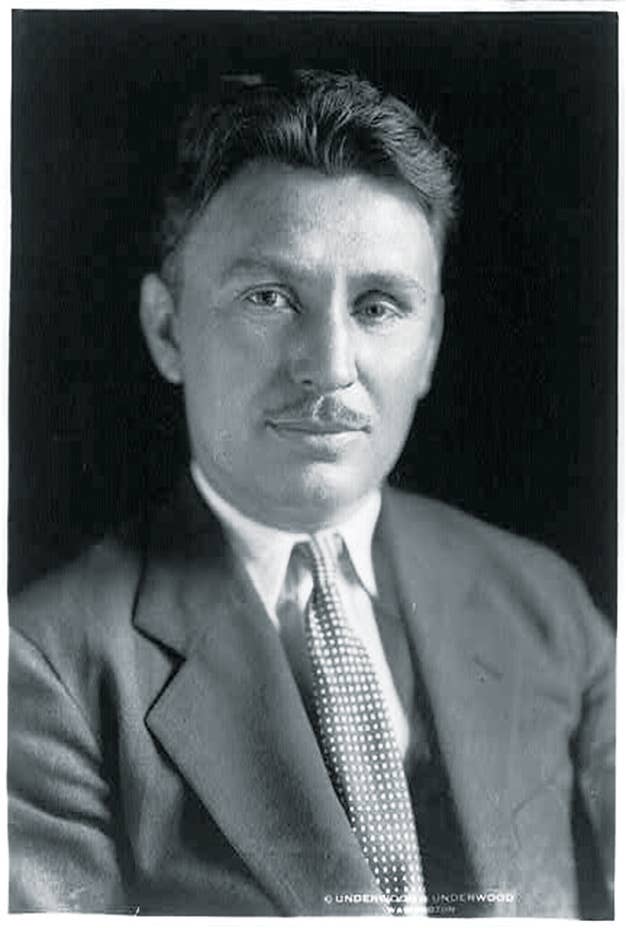This Incredible Pilot: Wiley Post
If only airplanes could talk. The white and two-toned blue Lockheed Vega Winnie Mae residing in the Smithsonian Institution’s Udvar-Hazy Center, outside of Washington, D.C., would have more than a…

Wiley Post [image: Library of Congress/Public Domain]
If only airplanes could talk. The white and two-toned blue Lockheed Vega Winnie Mae residing in the Smithsonian Institution’s Udvar-Hazy Center, outside of Washington, D.C., would have more than a few stories to share. This particular Vega has been up to the stratosphere and around the world. And all at the capable hands of one Wiley Post.
Post’s beginnings were humble. He was born in 1898 to cotton farmers in northeast Texas. The family relocated to Oklahoma when he was 5. At 15, Post got his first look at an airplane, a Curtiss design. Although he had only completed seventh grade, and not as a particularly remarkable student, Post immediately enrolled in the Sweeney Automobile and Aviation School in Kansas City, Missouri.
Post completed the seven-month program, but aviation remained out of his reach. He returned to Oklahoma to work in construction—but he was determined to fly. In April 1917, the U.S. entered World War I. Post saw it as an opportunity and signed up for the U.S. Army in the hope of joining the Air Service. While Germany’s surrender in 1918 was a welcome end to a painful war for most, for Post it meant another roadblock to becoming a pilot, as he was out of the military before he had received his pilot certificates.
The next few years were rough for Post. He spent time working in the Oklahoma oil fields, but the job was sporadic, and he wound up turning to armed robbery, landing him in prison for more than a year. An accident in the oil fields in 1926 cost him the sight in his left eye. The settlement from the accident financed Post’s first airplane, a Curtiss JN-4 Canuck. The Canuck would eventually be damaged in an accident, but it had given Post his start. He was soon hired to fly for oil executive Florence C. Hall, who bought a Lockheed Vega for Post to fly—and he named it the Winnie Mae.
By 1930, Post was using the Vega for more than just transportation, winning the National Air Race Derby from Los Angeles to Chicago. In 1931, Post flew around the world in nine days alongside navigator Harold Gatty, and in 1933 Post matched his around-the-world flight, this time solo, and eclipsed his previous record, completing the flight in seven days, 18 hours, and 49 minutes.
But there was more to aviation for Post than speed. In 1934, he decided to set an altitude record. Because the Winnie Mae was not pressurized, he began experimenting with pressurized suits, and his design, while clunky, was ultimately successful. He used his pressurized suit to reach 40,000 feet in 1934, helping him to discover what we now know as the jet stream. His suit became the predecessor for astronaut suits in the ’50s and ’60s.
Post was killed at age 36 in a 1935 airplane accident alongside pilot and friend Will Rogers. As a tribute to the Oklahoman, Post lay in state in the capitol rotunda in Oklahoma City. Wiley Post Airport (KPWA) in Oklahoma City bears his name, and he was enshrined in the National Aviation Hall of Fame in 1969. All are fitting tributes to a man who wanted to touch the sky and was willing to do whatever it took to get there.
Editor's note: This story first appeared in the September, 2023 issue of Plane & Pilot magazine.

Subscribe to Our Newsletter
Get the latest Plane & Pilot Magazine stories delivered directly to your inbox






